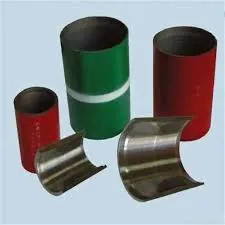- Afrikaans
- Albanian
- Amharic
- Arabic
- Armenian
- Azerbaijani
- Basque
- Belarusian
- Bengali
- Bosnian
- Bulgarian
- Catalan
- Cebuano
- Corsican
- Croatian
- Czech
- Danish
- Dutch
- English
- Esperanto
- Estonian
- Finnish
- French
- Frisian
- Galician
- Georgian
- German
- Greek
- Gujarati
- Haitian Creole
- hausa
- hawaiian
- Hebrew
- Hindi
- Miao
- Hungarian
- Icelandic
- igbo
- Indonesian
- irish
- Italian
- Japanese
- Javanese
- Kannada
- kazakh
- Khmer
- Rwandese
- Korean
- Kurdish
- Kyrgyz
- Lao
- Latin
- Latvian
- Lithuanian
- Luxembourgish
- Macedonian
- Malgashi
- Malay
- Malayalam
- Maltese
- Maori
- Marathi
- Mongolian
- Myanmar
- Nepali
- Norwegian
- Norwegian
- Occitan
- Pashto
- Persian
- Polish
- Portuguese
- Punjabi
- Romanian
- Russian
- Samoan
- Scottish Gaelic
- Serbian
- Sesotho
- Shona
- Sindhi
- Sinhala
- Slovak
- Slovenian
- Somali
- Spanish
- Sundanese
- Swahili
- Swedish
- Tagalog
- Tajik
- Tamil
- Tatar
- Telugu
- Thai
- Turkish
- Turkmen
- Ukrainian
- Urdu
- Uighur
- Uzbek
- Vietnamese
- Welsh
- Bantu
- Yiddish
- Yoruba
- Zulu
steel pipe couplings for enhanced durability and performance in plumbing applications
Steel Couplings for Pipe An Overview
Steel couplings are fundamental components in various piping systems, commonly used in industries such as construction, oil and gas, water treatment, and chemical processing. Their primary function is to connect two sections of pipe, facilitating the seamless transfer of fluids, gases, or steam while ensuring structural integrity and leak prevention. This article delves into the characteristics, advantages, types, and applications of steel couplings in piping systems.
Characteristics of Steel Couplings
Steel couplings are designed to withstand high pressure and temperature conditions, making them suitable for a variety of demanding environments. Typically made from carbon steel or stainless steel, these couplings are known for their strength, durability, and resistance to corrosion. The choice between carbon steel and stainless steel often depends on the specific application requirements; for instance, stainless steel offers superior resistance to rust and chemical reactions, making it ideal for corrosive environments.
Another important characteristic of steel couplings is their ability to accommodate thermal expansion and contraction of the piping materials. Properly designed couplings can absorb movements without compromising the integrity of the connection. Additionally, steel couplings are available in various sizes and configurations to fit different pipe diameters and installation needs.
Advantages of Using Steel Couplings
One of the primary advantages of steel couplings is their robustness. They provide a reliable connection that can handle substantial external loads and internal pressures. This makes them particularly valuable in heavy-duty applications, where other materials might fail under stress.
Another significant benefit is the fire resistance that steel offers. In industries where flammable materials are transported, using steel couplings can enhance safety measures. Their durability also results in lower maintenance costs over time, as they are less likely to require frequent replacements compared to couplings made from other materials.
Moreover, steel couplings contribute to a more streamlined installation process. Many modern steel couplings are designed with user-friendly features, such as quick-connect options, which save time and technical labor during installation.
Types of Steel Couplings
steel couplings for pipe

Steel couplings can be categorized based on their design and application, including but not limited to
1. Slip Couplings These couplings allow for the easy joining of two pipe ends. They slide over the pipe ends, which are then welded or otherwise fastened together. This type is useful for repairs or when length adjustments are necessary.
2. Threaded Couplings Featuring male and female threads, these couplings screw onto the ends of the pipes. They are often used in smaller diameter pipelines and facilitate easy disassembly.
3. Welded Couplings These are permanently attached to the pipes through welding. This type provides a very strong and leak-proof joint, making them ideal for high-pressure applications.
4. Flanged Couplings These couplings involve plates (flanges) that are bolted together. Flanged connections allow for easier access for inspections and maintenance.
Applications of Steel Couplings
Steel couplings are utilized across diverse sectors. In the oil and gas industry, they are crucial for transporting crude oil and natural gas safely and efficiently. In water treatment facilities, steel couplings connect various piping networks, facilitating the transport of treated water. Additionally, in construction projects, steel couplings play a vital role in HVAC systems, ensuring proper airflow and temperature regulation.
Furthermore, the chemical industry benefits from steel couplings that facilitate the safe transfer of hazardous materials, while in infrastructure projects, these couplings contribute to the durability and longevity of pipelines.
Conclusion
In summary, steel couplings for pipe play a pivotal role in modern engineering and construction. Their robustness, versatility, and reliability make them indispensable in various industrial applications. As technology continues to evolve, advancements in coupling design and materials will further enhance their performance and expand their use in new areas, ensuring that they remain a critical component in piping systems for years to come.
-
Tubing Pup Joints: Essential Components for Oil and Gas OperationsNewsJul.10,2025
-
Pup Joints: Essential Components for Reliable Drilling OperationsNewsJul.10,2025
-
Pipe Couplings: Connecting Your World EfficientlyNewsJul.10,2025
-
Mastering Oilfield Operations with Quality Tubing and CasingNewsJul.10,2025
-
High-Quality Casing Couplings for Every NeedNewsJul.10,2025
-
Boost Your Drilling Efficiency with Premium Crossover Tools & Seating NipplesNewsJul.10,2025







